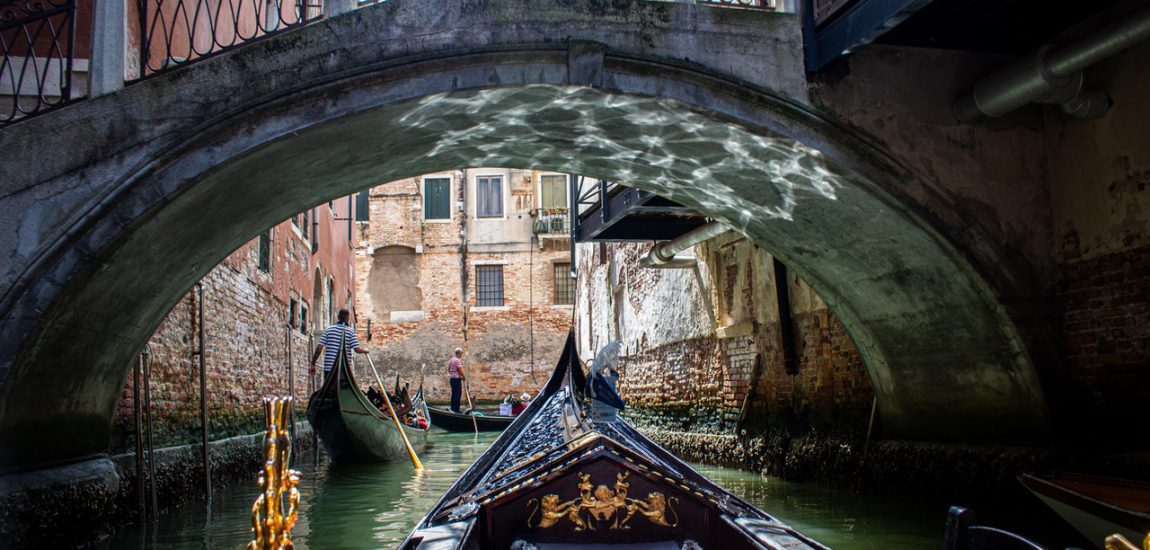
Urbino Summer School in Paleoclimatology (USSP) in Italy
The 13th Urbino Summer School in Paleoclimatology (USSP) was held at the University of Urbino (Italy) in July 2016 (www.urbinossp.it). USSP focuses on past climate dynamics with special emphasis on the analysis of the long-term carbon cycling and its implications in the understanding of present and future climates. It is a unique opportunity for postgraduate students and early career scientists to be trained by ~25 leading senior scientist from around the world. I was looking forward to an intensive course to strengthen my knowledge of different areas of paleoclimatology including biogeochemical cycling, paleoceanography and deep-time climate modeling.
after-work-beer
The good timing of USSP gave me the opportunity to participate in the Goldschmidt Conference, held this year in Japan, a week of sightseeing in Japan and then, relaxed and motivated, directly go to Urbino. At the airport in Ancona already, I met two of my ‘summer-school-colleagues’ with whom I spent most of the following 17 days. Unfortunately, because of some lost pieces of luggage, we arrived in Urbino a bit later than expected and missed the icebreaker. So we had to wait until the next day to meet the other students.
USSP 2016 group picture with all participants
The course started with four days of lectures and after work beers at ‘Piazza della Repubblica’, the heart of the beautiful small Renaissance city. This was a great opportunity not only to socialize but also to discuss my research with some of the lecturers. After these first intense days of introductory lectures about climate studies, lectures about age models, the carbon cycle and biotic proxies, a day of fieldwork followed. We visited the outcrop in the Contessa Valley that spans several organic-rich horizons deposited in the Cretaceous and the outcrop across the K/T boundary at Bottaccione. Subsequently, we split up in 6 groups for logging where I had the possibility to work on the outcrop in Furlo containing Oceanic Anoxic Event 2 (OAE-2; C/T boundary, ~94 Ma). This section was especially interesting to me since I am working on the same event but on southern hemisphere sections.
fieldwork
On the next day we learned how to statistically evaluate whether the stratigraphies of our logged sites followed Milankovitch cycles and the groups presented their findings. The lectures on the following days covered orbital forcing of climate, climate models, geochemical proxies, OAEs, several warm periods, cryosphere dynamics and sea level, the reconstruction of glacial-interglacial records, Holocene ice cores and present day climate change including prospects for the future. We also had poster sessions giving us students the possibility to present our work and the Cioppino Conference where the lecturers were talking about their current projects.
Urbino, Italy
Most people used the free days to do sightseeing. I spent one day in Urbino visiting the childhood house of Raphael (Raffeollo Sanzio da Urbino), the Ducal Palace and the Cathedral and on another day, some other students and I rent a car and explored the lovely city of San Marino.
Overall, USSP was an amazing experience! I have learned a lot about paleoclimatology that is very useful for my work. It was also great to have the possibility to talk to paleoclimate experts in an informal atmosphere and to meet so many interesting and nice people with whom I will hopefully stay in touch. Many thanks to the EAG for the sponsorship that made this trip possible!
Sophie Gangl
About the Author:
Sophie Gangl is in the second year of her PhD studies at the Department of Chemistry at the University of Otago in Dunedin, New Zealand. She is looking at C isotopes and additional redox-sensitive metal isotopes (e.g. U) during Oceanic Anoxic Event 2 (C/T boundary, ~94 Ma) from southern hemisphere sites in New Zealand. Her supervisors and advisors are Claudine Stirling, Christopher Moy, Matthew Clarkson, Hugh Jenkyns (University of Oxford) and James Crampton (GNS Science and Victoria University of Wellington).
